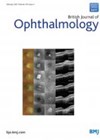You searched for "vitreous"
Interspecialty referrals
4 February 2021
| Gwyn Samuel Williams
|
EYE - Cataract, EYE - Cornea, EYE - Glaucoma, EYE - Imaging, EYE - Neuro-ophthalmology, EYE - Oculoplastic, EYE - Oncology, EYE - Orbit, EYE - Paediatrics, EYE - Pathology, EYE - Strabismus, EYE - Refractive, EYE - Vitreo-Retinal, EYE - General
Referrals between the many and varied branches of ophthalmology sometimes underline how sub-specialised we have all become nowadays. The old era when everyone was an ophthalmic jack of all trades is gone, for better or for worse, and instead of...
Traumatic optic neuropathy
In neuro-ophthalmology we get asked a lot about management of patients who suffered significant trauma and presented with loss of vision secondary to presumed traumatic optic neuropathy (TON). TON happens usually in the context of significant craniofacial trauma. The incidence...Acute dellen formation post trauma
1 January 2016
| Lucia Derriman, Andrew Pearson
|
EYE - Cataract, EYE - Cornea, EYE - General, EYE - Glaucoma, EYE - Imaging, EYE - Neuro-ophthalmology, EYE - Oculoplastic, EYE - Oncology, EYE - Orbit, EYE - Paediatrics, EYE - Pathology, EYE - Refractive, EYE - Strabismus, EYE - Vitreo-Retinal
Corneal dellen are saucer-like thinnings, usually of the peripheral cornea [1]. Dellen formation is thought to be related to localised tear film instability [2], specifically the absence of the mucin component of the tear film. Without the mucin layer, dry...
Pigmented paravenous retinochoroidal atrophy
4 December 2024
| William Spackman, Tun Giap Tan, Stephen Turner
|
EYE - Imaging, EYE - Vitreo-Retinal
Presentation A 46-year-old Caucasian female was referred to the eye clinic by her local optician following a routine sight test. She was noted to have pigmentary retinal changes in both eyes but was asymptomatic with no visual complaints. At presentation...
Ocular toxoplasmosis
3 June 2021
| Jonathan Chan
|
EYE - Vitreo-Retinal
|
acute chronic infection, ocular toxoplasmosis, serology IgG IgM
This is a retrospective study of 106 patients between March 2011 and June 2018, of 37 IgM + group and 69 IgM - group of patients. The clinical features, demographics of patients with ocular toxoplasmosis (OT) were studied according to...
Uveitis ocular toxoplasmosis
1 October 2021
| Jonathan Chan
|
EYE - Vitreo-Retinal
This is a retrospective study of 106 patients between March 2011 and June 2018, of 37 IgM +group and 69 IgM - group of patients. The clinical features, demographics of patients with ocular toxoplasmosis (OT) were studied according to the...
Complications of limbal stay sutures
There is limited literature describing complications at the limbal suture site. The authors describe two cases with postoperative complications due to use of intraoperative limbal stay sutures. Each case had strabismus surgery at other centres but with presentation to the...The management of retinal vein occlusions: a summary
1 February 2015
| Amy-lee Shirodkar
|
EYE - Cataract, EYE - Refractive, EYE - Cornea, EYE - Imaging, EYE - Vitreo-Retinal, EYE - General
Retinal vein occlusions (RVO) are the most common cause of visual loss from retinal vascular disease second to diabetic retinopathy. Vision is lost due to ischaemia, macular oedema and / or haemorrhage which ultimately effects a patient’s quality of life...
An update on inherited retinal disorders (part 2): Approaches to therapy for IRDs
1 December 2016
| Stacey Strong, Michel Michaelides (Prof)
|
EYE - Vitreo-Retinal
Part 1 of this topic can be found here There are currently no proven cures for inherited retinal disease (IRD). However, multiple avenues of research are being investigated to better understand disease mechanisms and trial potential therapies that may slow...
Understanding vasoproliferative retinal tumours
Syed Irtiza Ali Shah explores this rare and unusual condition through a fascinating case presentation. Vasoproliferative tumours of the retina (VPTR) are a vascular mass with an associated exudative retinopathy alongside the presence of minimally dilated feeder vessels. This is...Charity work in Cambodia: Culture, cataracts, and cruelty
3 October 2024
| Bita Manzouri
|
EYE - General
Cambodia has one of the lowest numbers of eye specialist doctors per capita in the world, and Bita Manzouri takes us on a journey into the charitable work of the Khmer Sight Foundation who are working to combat this. “Ut...





